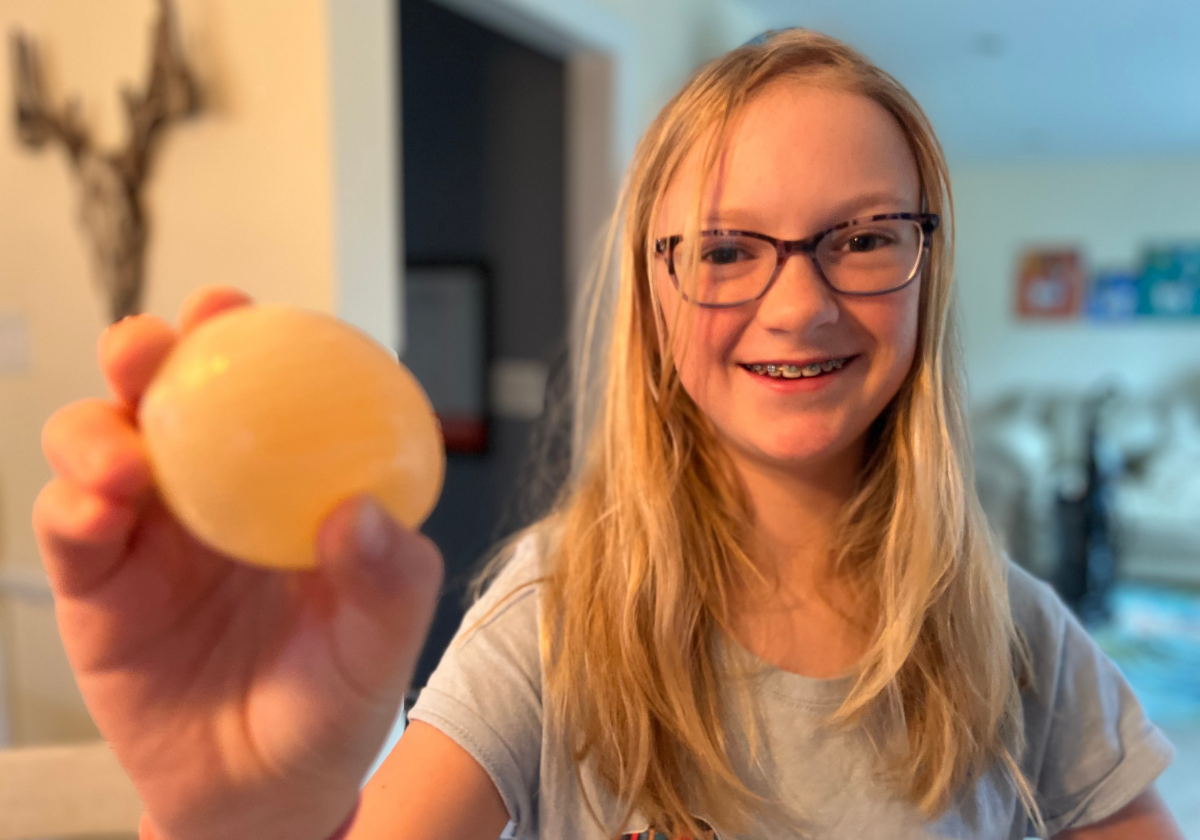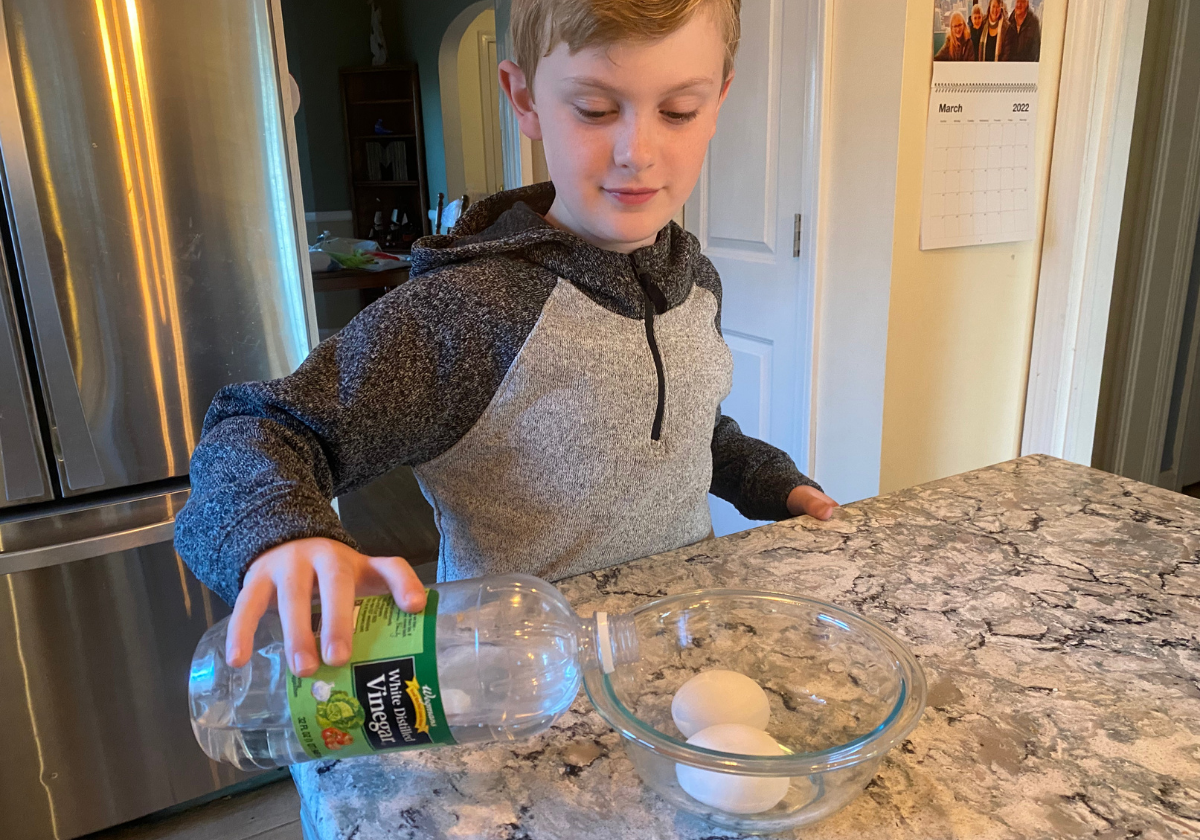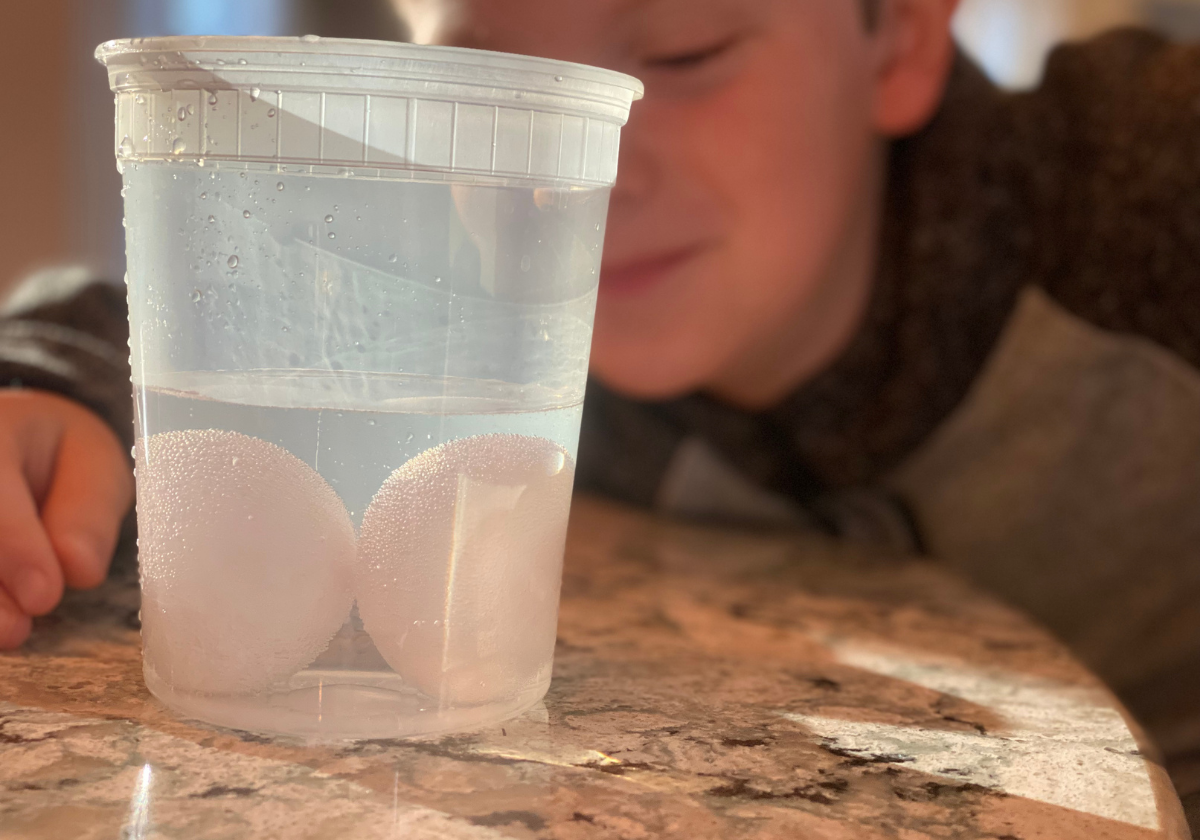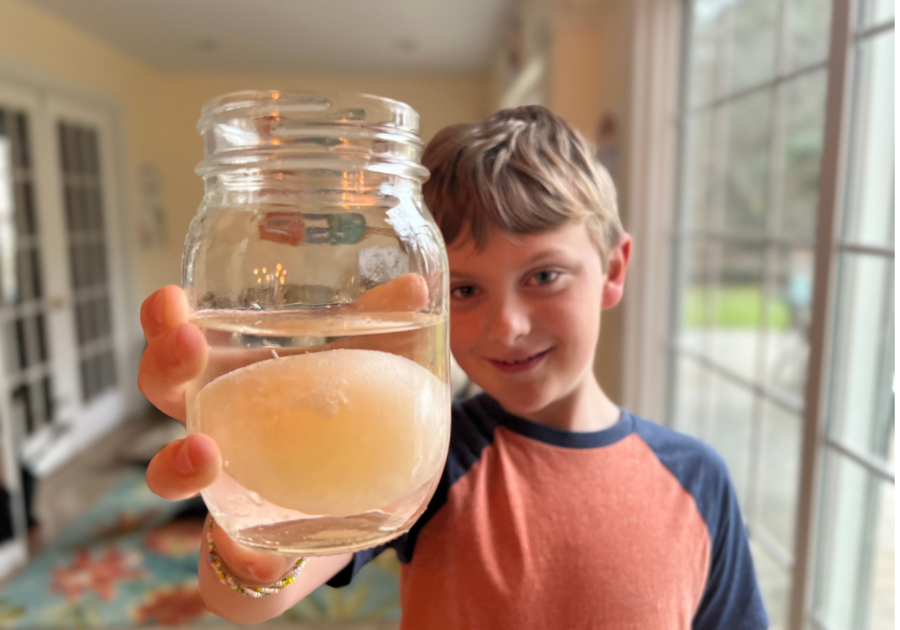The Easter Bunny might magically hide eggs at your house, but that's nothing compared to the magic your kids will think you're capable of when you show them how to bounce a "rubber" egg.
This at-home STEM fun is incredibly easy and takes just two common kitchen items — white vinegar and an egg!
How does it work?
Eggshells are made from calcium carbonate. The vinegar dissolves the calcium in the egg’s shell but not the membrane inside the shell. This leaves behind the transparent rubbery membrane — your rubber bouncy egg! The vinegar soak also causes the egg to swell the longer it sits in the vinegar because some of the vinegar is being absorbed into the membrane.
 |
Make this an even more interesting experiment for your kids by using two eggs — one hardboiled and one raw — to see if there's a difference in the outcome. (A heads up: Bounce a raw egg too much and it will go splat!)
Ready to start your bouncy rubber egg experiment? Egg-cellent. Here's how to make a rubber bouncy egg in your kitchen, just in time for Easter.
What you need:
- 2 eggs
- Clear glass or plastic jar or bowl with a lid
- White vinegar
Directions:
1. Place eggs gently in your glass jar or bowl.
2. Fill the jar or bowl with enough vinegar it entirely covers the eggs.
 |
3. Cover the container.
4. After just a few minutes you will be able to see the vinegar reacting with the eggshell in the way of tiny bubbles covering the egg.
 |
5. After 2 or 3 days (you'll know they're ready when the surface of your vinegar has a scummy gross film on top) remove the eggs from the vinegar.
6. Rinse carefully with water.
7. Gently roll and bounce your "rubber" eggs. It will be a STEM Easter egg experiment to remember



